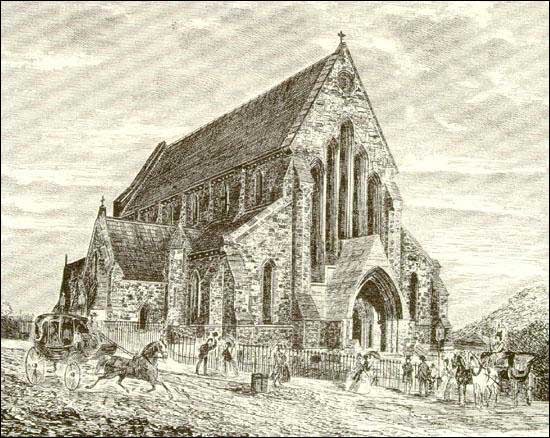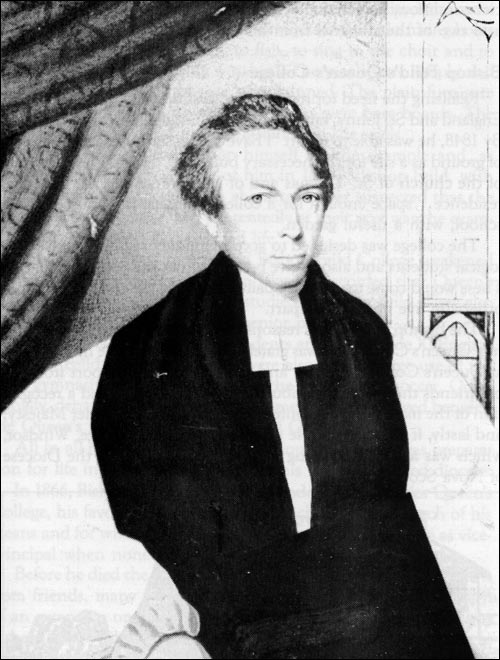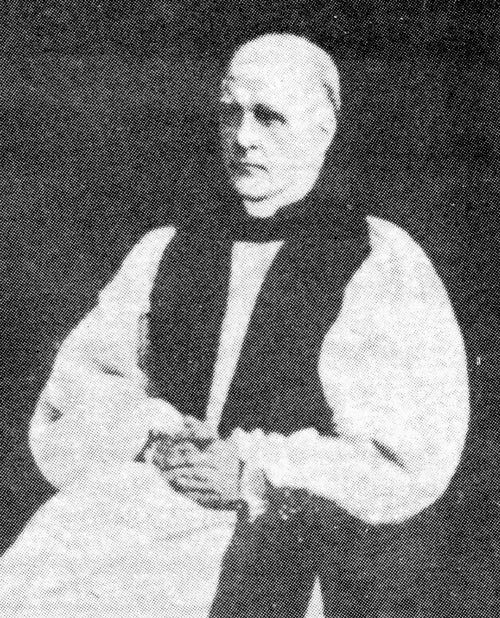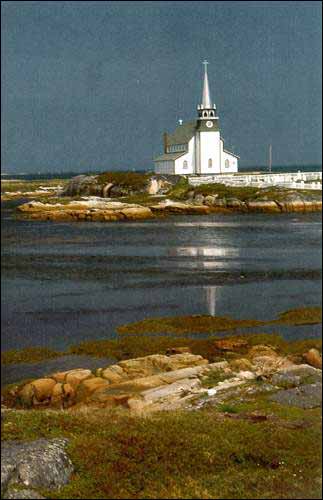The Church of England
When Sir Humphrey Gilbert claimed formal possession of the island of Newfoundland for Queen Elizabeth in 1583, he ordained that "Religion, in publique exercise should be according to the Church of England". But for much of the 17th century, the presence of Anglican clergymen was sporadic at best. The Rev. William Leat appears to have served briefly at John Guy's colony at Cupids Cove. The Rev. William James spent a few weeks at Ferryland in 1622, and the Rev. Erasmus Stourton was there in 1627-28.
Though petitions were sent repeatedly to the British government requesting that a clergyman be sent, it was not until 1697 that the Rev. John Jackson became chaplain to the garrison in St. John's , and minister to the settlers. A small church was built near Fort William. A controversial figure, Jackson remained in Newfoundland until 1705. He was the first clergyman to receive assistance from the Society for the Propagation of the Gospel in Foreign Parts (SPG) - which for the next two centuries was to provide crucial funding and encouragement to Anglican clergymen, missionaries and schools.

In the 18th century, Harbour Grace, Bonavista, Trinity and St. John's were the most important Anglican missions, although clergy did travel to the other outports. Sometimes there was no clergyman on the island at all, particularly in the early part of the century, and there were never more than three at any one time. The longest serving of the early Anglican clergymen was the Rev. Edward Langman, who arrived in 1752 and died in St. John's 31 years later.
Hitherto a mission under the authority of the Bishop of London, Newfoundland was transferred to the bishopric of Nova Scotia in 1825, becoming an archdeaconry in 1829. The first episcopal visit was that of Bishop John Inglis in 1827. There were ten Anglican clergy in the colony at that time. He held confirmations, consecrated churches and arranged for new churches and schools to be built. On a return visit in 1832 Inglis performed the first ordination on the island, that of Rev. Thomas M. Wood. In 1839 a separate bishopric of Newfoundland and Bermuda was created. The first Anglican bishop was Rev. Aubrey George Spencer, who took office in 1839.

Under Spencer's leadership the number of clergy more than doubled. He created three rural deaneries (Avalon, Trinity, Bermuda), increased the number of church schools, founded what later became Queen's College (for theological training), and planned the building of a cathedral in St. John's. He was succeeded in 1844 by the tireless, formidable Bishop Edward Feild.
Unlike Spencer, Feild was a high churchman. In matters of doctrine, ritual and architecture, he sought to emphasize the Church's Catholic tradition. Administratively, he sought to strengthen the Church's independence and integrity, and to improve its financial position. Concerned by the spread of Methodism, he opposed any cooperation in joint Protestant endeavours, including nondenominational Protestant schools. He consistently agitated for an exclusively Anglican school system, which was finally instituted in 1874. Each summer he travelled the coasts of Newfoundland and Labrador, and missions were established in areas hitherto neglected, such as Labrador and the west coast. Feild was the effective architect of the Church of England in Newfoundland, and his physical monument is the fine Gothic Revival cathedral in St. John's, designed by Sir George Gilbert Scott.

Feild's successors built on his foundation. In 1918 a Newfoundlander became bishop for the first time, the Rev. William White. Bermuda became a separate diocese soon after, and the Newfoundland Church decided not to accept further financial support from the SPG. In 1948, by mutual agreement, the Church was placed under the authority of the General Synod of the Canadian Church. In 1976, the diocese was restructured into three dioceses (Eastern Newfoundland and Labrador, Central Newfoundland and Western Newfoundland).

Bishops of the Diocese of Newfoundland
- 1839-1843 Aubrey George Spencer
- 1844-1876 Edward Feild
- 1876-1877 James Butler Kelly
- 1878-1917 Llewellyn Jones
- 1918-1942 William Charles White
- 1942-1955 Philip Selwyn Abraham
- 1956-1965 John Alfred Meaden
- 1965-1975 Robert Lowder Seaborn




